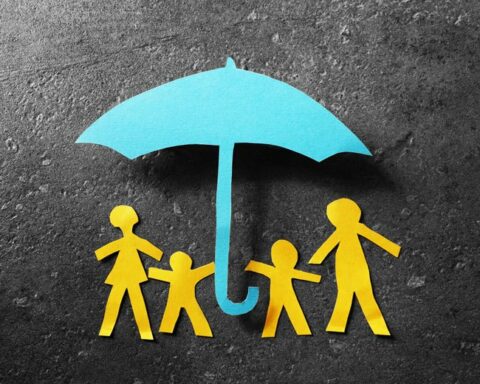The transport, mobility, and infrastructure sector encompasses a wide range of activities and systems that are essential for the movement of people and goods, as well as for the development and maintenance of the infrastructure that enables these movements. This includes the construction and management of roads, railways, airports, ports, and public transport systems, as well as the coordination and logistics of transport services. Innovations in mobility, such as electric vehicles, autonomous systems, and smart transport networks, are playing an increasingly significant role in enhancing efficiency and sustainability within this sector. The sector is crucial for the economy, as it forms the basis for trade, employment, and access to services and markets.
At the same time, the sector faces significant challenges such as managing complex and often outdated infrastructure, addressing congestion and environmental impact, and integrating new technologies and mobility solutions. The need to develop sustainable and resilient solutions, such as greener transportation modes and smart traffic systems, is becoming more urgent due to the growing urban population and the pressure on infrastructure. Policymakers, businesses, and stakeholders need to collaborate to implement innovative strategies that improve both efficiency and sustainability while addressing the changing needs and expectations of society.
Road Transport
Road transport is one of the most widely used forms of transportation globally, encompassing both passenger and freight transport. The road network, which includes highways, main roads, local roads, and urban streets, forms an essential part of the infrastructure that enables vehicle movement. Dependence on road transport is significant, as it supports both the individual transportation of people and the movement of goods between businesses and consumers.
In the logistics sector, road transport plays a crucial role in « last mile delivery, » where products are delivered from warehouses or distribution centers to their final destination. This is particularly important in the context of e-commerce, where consumers expect fast delivery of products. Trucks, vans, and motorcycles are at the core of these logistical operations.
At the same time, the road transport sector faces significant challenges in terms of sustainability. The reliance on fossil fuels and the associated greenhouse gas emissions contribute to climate change and air pollution. In response, alternatives such as electric vehicles, hybrid technology, and hydrogen-powered vehicles are becoming increasingly important. Innovations such as autonomous vehicles and smart traffic systems also promise to improve the efficiency of road transport and reduce congestion in urban areas.
Railways
Railways are another critical component of transport infrastructure, particularly effective for transporting large numbers of people and goods over long distances. Rail transport is more environmentally friendly than road transport, especially when it comes to heavy freight and intercity travel. This is because trains consume less energy per unit of transported goods or passengers and generate significantly lower CO2 emissions compared to trucks or cars.
In many countries, the railway network is an essential part of national infrastructure, connecting cities, ports, and industrial areas. In addition to traditional train services, there have been significant innovations in high-speed trains over the past decades, reaching speeds of over 300 km/h and connecting urban centers in short timeframes. These services provide a sustainable alternative to domestic air travel and help reduce congestion and air pollution in busy traffic hubs.
However, expanding railway networks and modernizing existing infrastructure are costly and require significant investments from governments and private parties. Moreover, the integration of rail networks with other forms of transport, such as buses and trams, plays a crucial role in creating seamless mobility solutions for passengers.
Aviation
The aviation sector is vital for the international transportation of both people and goods. Air transport offers fast and efficient long-distance travel options, making it a key pillar of the global economy. Aviation has contributed to the growth of globalization by reducing the time and cost of travel between continents. Airports serve as major hubs for international trade and tourism and are often economic drivers for urban areas.
Air freight plays a key role in quickly moving valuable and time-sensitive goods, such as medical equipment, electronics, and fresh produce. Additionally, low-cost airlines have made air travel more accessible to a broader audience, transforming the global travel market.
However, the aviation industry is under increasing pressure to reduce its environmental impact, as the sector is responsible for a significant share of global CO2 emissions. Innovations such as biofuels, lighter aircraft, and the development of electric and hybrid planes are important steps toward sustainable aviation. At the same time, initiatives to improve airport efficiency, such as advanced air traffic control systems and smart infrastructure, aim to reduce waiting times and emissions.
Shipping
The shipping sector is the backbone of global trade, as approximately 90% of all global goods movement occurs via sea routes. From container shipping to bulk freight, ships play an indispensable role in transporting goods over long distances and between continents. Ports are the central hubs of the maritime logistics chain and are crucial for the efficiency of international trade.
The economies of scale in shipping make it the most cost-effective way to transport large quantities of goods, particularly in the context of intercontinental trade. Container ships, oil tankers, and bulk carriers ensure that goods such as cars, electronics, oil, gas, and grain are transported effectively. Port infrastructure is essential to facilitate these movements, with modern facilities such as container cranes, transshipment stations, and storage depots.
As in other transport sectors, sustainability has become increasingly important in shipping. Innovations such as LNG-powered ships, the use of sails and wind energy, and the development of emission-free ports are key steps in reducing the ecological footprint of the maritime industry. Internationally, stricter regulations and standards, such as the IMO 2020 rules limiting sulfur oxide emissions from ships, are also being implemented.
Urban Mobility and Public Transport
With the rapid urbanization of the global population, urban mobility has become one of the biggest challenges of the 21st century. Creating efficient, sustainable, and inclusive transport systems in cities is crucial to addressing the increasing pressure on infrastructure and environmental resources. Public transport plays a key role in this, with systems such as buses, metros, trams, and ferries transporting millions of people daily to and from work, schools, and other destinations.
Urban mobility, however, extends beyond public transport. It also includes new forms of mobility such as car-sharing, electric scooters, bicycles, and on-demand mobility services. These forms of mobility, often supported by digital platforms and apps, offer flexible and environmentally friendly alternatives to traditional car traffic.
Smart cities and technologies such as traffic management systems, intelligent transport systems (ITS), and sensor-based infrastructure play a crucial role in optimizing urban mobility. They help reduce congestion, improve traffic safety, and promote more efficient movement.
Infrastructure Development
Infrastructure forms the physical foundation of the transport system and is vital for economic growth and societal well-being. The construction, maintenance, and modernization of roads, railways, airports, ports, and other transport-related infrastructure are complex and require significant investments. Bridges, tunnels, and pipelines also play an important role in connecting geographically separated areas and supporting the distribution of essential resources such as energy and water.
Infrastructure development often requires collaboration between public and private sectors, with government agencies, private developers, and investors working together to realize large-scale projects. Innovations such as modular construction, prefab techniques, and the use of advanced building materials help improve the efficiency and sustainability of infrastructure projects.
Resilience is also a key focus in infrastructure development, particularly in light of the increasing threat of climate change. Cities and countries face the challenge of building infrastructure that can withstand extreme weather conditions, rising sea levels, and other environmental factors. This requires investments in sustainable and climate-resilient infrastructure solutions, such as water barriers, sustainable drainage, and green urban areas.
Financial and Economic Crime
The transport, mobility, and infrastructure sector plays a fundamental role in the modern economy by facilitating the movement of goods and people, and supporting economic growth and development. This sector encompasses a wide range of activities, from the construction and maintenance of roads, bridges, and railways, to the operation of public transportation and logistics services. While the sector is crucial for economic vitality, it also faces significant challenges related to financial and economic crime. These challenges manifest at various levels, with the complexity of infrastructure projects and the scale of mobility networks bringing added vulnerabilities.
1. Fraud and Corruption in Infrastructure Projects
Large-scale projects in the transport and infrastructure sector often involve substantial budgets and extended timelines, making them attractive targets for fraudulent activities and corruption. Fraud can take many forms, such as contract fraud, where contractors or suppliers falsely claim payments or declare illegitimate expenses. Corruption can arise in the form of bribery or the illegal acquisition of government contracts. Such activities undermine the integrity of procurement processes and frequently result in significant cost overruns and diminished project quality.
Moreover, corruption and fraud can lead to legal and reputational damage for the organizations involved. The intricate contract structures and subcontracts within large infrastructure projects can make it difficult to detect financial wrongdoing in a timely manner. The lack of transparency and adequate control mechanisms further contributes to the sector’s vulnerability to such crimes.
2. Money Laundering Through Transport and Infrastructure Companies
Transport and infrastructure companies, due to their scale and complexity, can also be used as vehicles for money laundering. This often involves creating false transactions or using complex financial structures to conceal illicit funds. Money laundering practices may take the form of investments in infrastructure projects with suspiciously high costs or the use of offshore accounts and other financial structures to obscure the origins of funds.
The sector is particularly susceptible to money laundering because the financial flows involved are often substantial and involve multiple parties. The absence of an effective control system can make it difficult to detect suspicious transactions. Therefore, companies must develop and implement robust compliance programs to manage and mitigate money laundering risks.
3. Corruption in Public Procurement
Public procurement is a key aspect of the transport and infrastructure sector, where government agencies award contracts for construction and maintenance projects. Corruption in procurement can occur when bidding processes are manipulated to favor a specific supplier or contractor. This can result in contracts being awarded to companies that do not meet the required standards, leading to poor-quality work and increased costs.
The integrity of procurement processes is crucial to ensuring fair competition and preventing the waste of resources. Implementing strict rules and transparent processes for procurement can help reduce corruption and ensure that public funds are allocated appropriately.
4. Risks of Information and Cybercrime
The increasing digitalization of the transport and infrastructure sector brings new risks related to information and cybercrime. With the integration of advanced technologies, such as smart traffic systems and automated logistics platforms, sensitive data is increasingly becoming the target of cyberattacks. These attacks can result in the loss of confidential information, disruption of operations, and financial losses.
Cybercrime not only leads to direct financial damage but can also threaten the operational continuity of transport and infrastructure companies. It is essential for organizations in this sector to implement strong cybersecurity measures and conduct regular audits and updates to ensure the security of their systems.
5. Risks of Internal Fraud and Employee Misconduct
Internal fraud and employee misconduct can be significant issues within the transport and infrastructure sector. Employees with access to financial resources or sensitive information may abuse their positions for personal gain. This can range from manipulating accounting records to stealing company assets.
Preventing internal fraud requires effective internal control mechanisms, regular audits, and fostering a culture of ethical behavior within the organization. Implementing robust compliance and reporting systems can help minimize the risks of internal fraud and ensure that employees adhere to corporate standards and guidelines.
Privacy, Data, and Cybersecurity
The transport, mobility, and infrastructure sector is a critical component of the modern economy, responsible for facilitating the movement of people and goods. This sector encompasses a wide range of activities, including public transportation, logistics, road and rail infrastructure, airports, ports, and related support services. With increasing digitalization and technological advancement, companies in this sector face significant challenges related to privacy, data protection, and cybersecurity. These challenges are complex and require a comprehensive approach to ensure the safety and integrity of data and systems. Below, the key challenges are discussed in detail.
1. Protection of Personal Data and Privacy
The transport and infrastructure sector collects, processes, and stores a substantial amount of personal data, such as travel information, payment details, and customer identification information. While this data is essential for the efficient operation of services, it also presents an attractive target for cybercriminals and other malicious actors seeking access to sensitive information.
A concrete example of privacy challenges can be found in public transportation, where systems such as electronic ticketing and customer profiles contain a wealth of personal information. The risk of data breaches and unauthorized access to this information can lead to severe consequences, such as identity theft or financial loss for customers. Companies must comply with strict privacy regulations, such as the General Data Protection Regulation (GDPR) in Europe, and implement robust measures to protect their customers’ data. This includes data encryption, secure storage methods, and access controls to ensure that only authorized individuals have access to sensitive information.
2. Cybersecurity of Infrastructure Networks and Systems
The transport, mobility, and infrastructure sector relies on an extensive network of technical systems and infrastructure essential for its operation. This includes traffic management systems, infrastructure monitoring and control systems, and communication and network equipment. These networks are particularly vulnerable to cyberattacks that can disrupt the operation of critical infrastructures, with potentially serious consequences for the safety and efficiency of transport and mobility services.
A specific example of cybersecurity challenges is the risk of attacks on traffic management systems, such as traffic lights and highway signaling. Cybercriminals may attempt to gain access to these systems to disrupt traffic flows, leading to severe traffic congestion, accidents, and other safety risks. To prevent such attacks, companies in the sector must implement robust cybersecurity measures, such as firewalls, intrusion detection systems (IDS), and regular security audits. Additionally, they must have continuous monitoring and incident response procedures in place to respond swiftly to suspicious activities and attacks.
3. Protection Against Data Breaches and Leaks
Data breaches and leaks pose significant risks to the transport and infrastructure sector, potentially exposing sensitive information such as customer data, operational data, and financial information. This can have serious repercussions, including reputational damage, legal liability, and financial losses.
A concrete example of data breaches can be found in the logistics sector, where companies process large volumes of data about shipments, customers, and trucks. A data breach could lead to the disclosure of confidential information about customers and shipments, resulting in a loss of customer trust and legal consequences. Companies must implement stringent data protection measures, such as data encryption, secure data storage, and regular security audits to identify and prevent potential data breaches. They must also ensure that their systems comply with data protection legislation and standards.
4. Risks of Internet of Things (IoT) and Connected Systems
The rise of the Internet of Things (IoT) has led to increased use of connected systems and sensors in the transport and infrastructure sector. These technologies are used for applications such as real-time vehicle monitoring, smart traffic systems, and advanced infrastructure management tools. While these technologies enhance efficiency and functionality, they also present significant cybersecurity risks.
A concrete example of IoT risks can be found in smart transportation systems equipped with sensors and communication technologies. If these systems are not properly secured, they may be vulnerable to cyberattacks that could lead to data misuse or operational disruptions. For example, attackers could gain access to smart traffic lights and manipulate them to disrupt traffic flows. To manage these risks, companies in the sector must ensure that all IoT devices and systems are well-secured, with strong authentication and encryption methods and regular updates and patches to address vulnerabilities.
5. Compliance with Regulations and Industry Standards
The transport, mobility, and infrastructure sector must comply with a range of regulations and industry standards related to privacy and cybersecurity. These regulations include both national and international laws and standards designed to ensure the protection of data and systems. Non-compliance with these regulations can lead to significant legal and financial consequences, as well as reputational damage.
A concrete example of compliance challenges is adhering to data protection and privacy guidelines, such as the GDPR in Europe or the California Consumer Privacy Act (CCPA) in the United States. Companies must ensure that their systems and processes meet the requirements of these regulations, such as obtaining consent for data collection, implementing data protection measures, and reporting data breaches to regulators and affected individuals. This requires a thorough understanding of the regulations, as well as effective internal controls and procedures to ensure compliance and manage risks.
6. Incident Response and Crisis Management
In the event of a cyber incident or data breach, effective incident response and crisis management are crucial to minimizing impact and limiting damage. This includes quickly identifying and addressing security incidents, communicating with affected parties, and taking steps to prevent recurrence.
A concrete example of incident response is when a transport company faces a ransomware attack that locks them out of their systems. The company must respond promptly by isolating the attack, coordinating system recovery, managing communication with customers and stakeholders, and notifying authorities. Developing an incident response plan and training staff in crisis management are essential for effectively handling security incidents and protecting business continuity.






